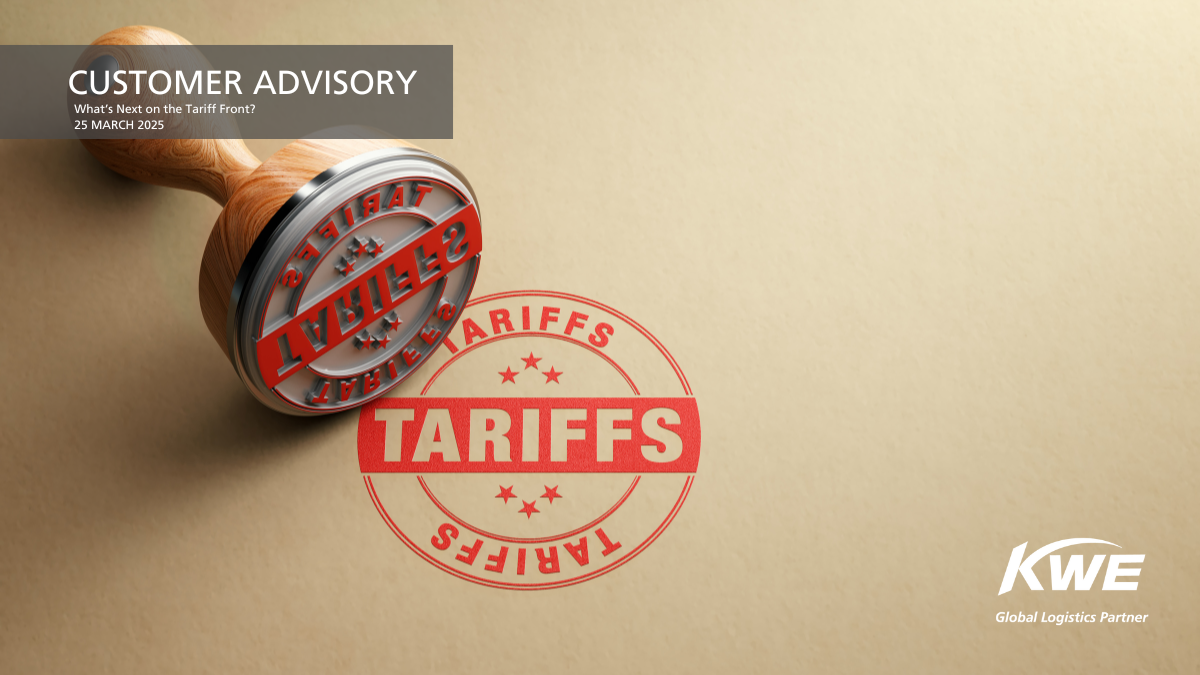Quote
WHAT’S NEXT ON THE TARIFF FRONT ?

A BROAD RANGE OF TARIFFS ON APRIL 2nd?
Jamieson Greer was confirmed as the United States Trade Representative on February 26th, 2025, in a vote of 56-43. Following his confirmation, he stated that he would “work strategically to address unfair trade practices, open new markets, tackle our record trade deficit, and restore America’s ability to become a country of producers."
On March 3rd, USTR Jamieson Greer delivered President Trump’s 2025 Trade Policy Agenda and 2024 Annual Report to Congress, as required annually by March 1st.
In response to U.S. tariffs on European Union (EU) steel and aluminum imports, the European Commission (EC) has launched swift and proportionate countermeasures on U.S. imports into the EU, based on a two-step approach:
- First, the Commission will allow the suspension of existing 2018 and 2020 countermeasures against the U.S. to lapse on April 1st, 2025. These countermeasures target a range of U.S. products in response to the economic harm caused to €8 billion worth of EU steel and aluminum exports.
- Second, in response to new U.S. tariffs affecting more than €18 billion in EU exports, the Commission has put forward a package of new countermeasures on U.S. exports that will come into force by mid-April, following consultation with Member States and stakeholders.
On March 18th, U.S. Treasury Secretary Scott Bessent stated that every country would receive a proposed tariff rate based on its own rates, non-tariff trade barriers, and other factors. These tariffs would be reciprocal and would take effect on April 2nd to offset trade practices the administration deems unfair.
Bessent confirmed that on April 2nd, each country would receive a number representing its tariff rate. A host of economic issues would be evaluated, such as non-tariff barriers, currency manipulation, and labor issues. He emphasized that reciprocal tariffs are necessary to bring industrialization back into the U.S.
Bessent also argued that Trump's pledges to impose blanket 20% tariffs on all imports "were maximalist positions that would probably be watered down in talks with trading partners." In an exclusive interview on Mornings with Maria, he expressed hope that, with the stacked tariffs looming, some of the U.S.’s trading partners would reach out to negotiate, potentially preventing some tariffs from being enacted.
On March 24th, the White House stated that, based on President Trump’s economic agenda, investment commitments from a large number of foreign firms have been secured. Although many details of President Trump’s reciprocal tariff plans, set to be announced on April 2nd, remain unclear, administration officials have hinted that the “Dirty 15” group of countries will be hit—presumably including most of America’s largest trading partners. The term "Dirty 15" has recently been used by the Trump administration to refer to approximately 15 countries with which the United States has significant trade imbalances. Stand by for further updates as we learn more.
That same day, President Trump issued an Executive Order instructing Secretary of State Marco Rubio to determine, at his discretion, which countries should be subject to a 25% tariff on Venezuelan oil imports. This will be in addition to and on top of any existing tariffs, effective April 2nd, 2025.
Informational document brought to you by KWE-USA Corporate Compliance